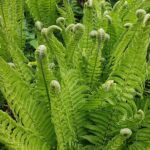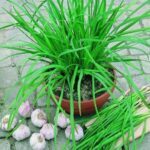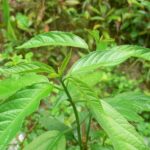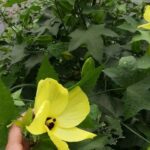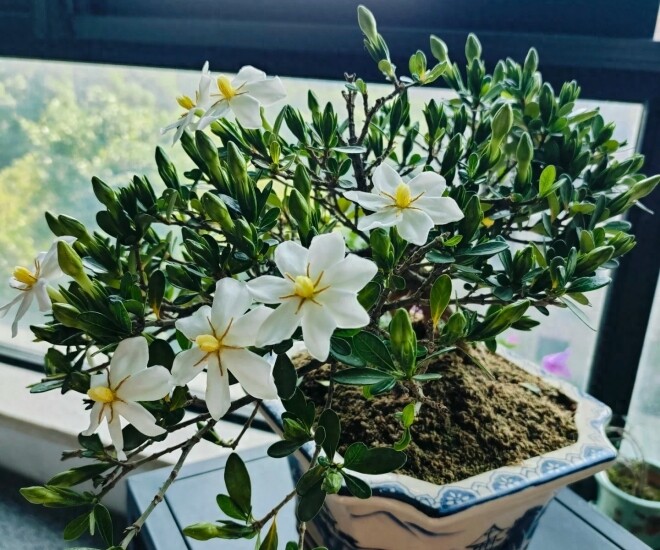
The Kleim’s Hardy Gardenia is a hybrid cultivar, bred for its ornamental value and ease of cultivation. Among gardenia enthusiasts, it is revered as the Rolls-Royce of the plant world.
This variety boasts a compact, bushy growth habit with a mounding form. When grown in containers, it typically reaches a modest height and width of 30-40 cm. Its leaves are nearly round, glossy, and a deep shade of green, maintaining their allure year-round.
Even without its blooms, the Kleim’s Hardy is a sight to behold, adorned with exquisite foliage. Its flowers are of a modest size, exuding elegance with their pristine white petals. Both its floral and foliar displays are aesthetically pleasing.
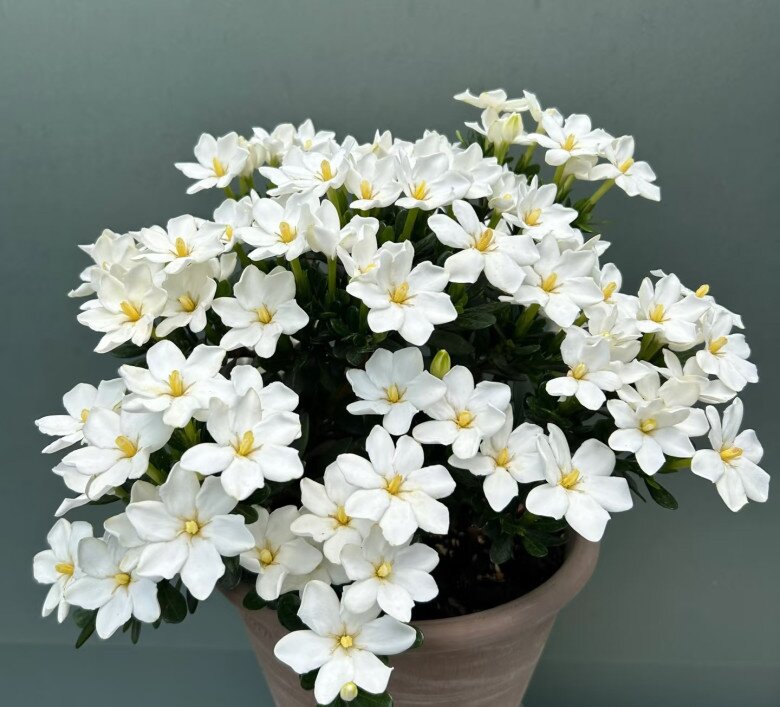
This gardenia variety is remarkably adaptable, thriving in various container sizes, from tiny pots that fit in the palm of your hand to larger planters. It develops a robust root system and readily exposes its roots, making it ideal for bonsai cultivation.
Beyond its captivating form, the Kleim’s Hardy gardenia entices with its delightful fragrance. The scent is subtle yet becomes more pronounced in warmer weather, gently permeating the surroundings. When in full bloom and brought indoors, its aroma will delicately infuse the entire room without being overpowering.
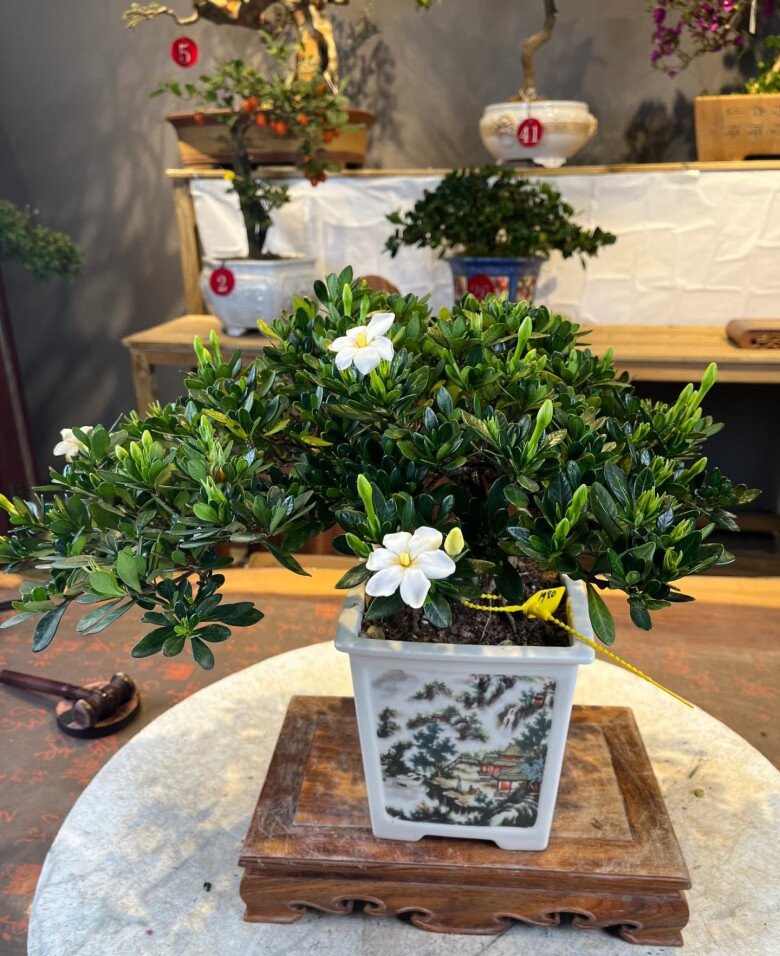
In terms of blooming season, while some gardenia varieties flower only once a year, Kleim’s Hardy is a repeat bloomer. It typically initiates flowering in late spring, and with proper care, it can continue blooming until early autumn, offering multiple floral displays annually.
Should there be a lull in its blooming cycle, a simple application of specialized fertilizers like Huadoudou No. 2 or potassium dihydrogen phosphate will encourage a profusion of buds in no time.
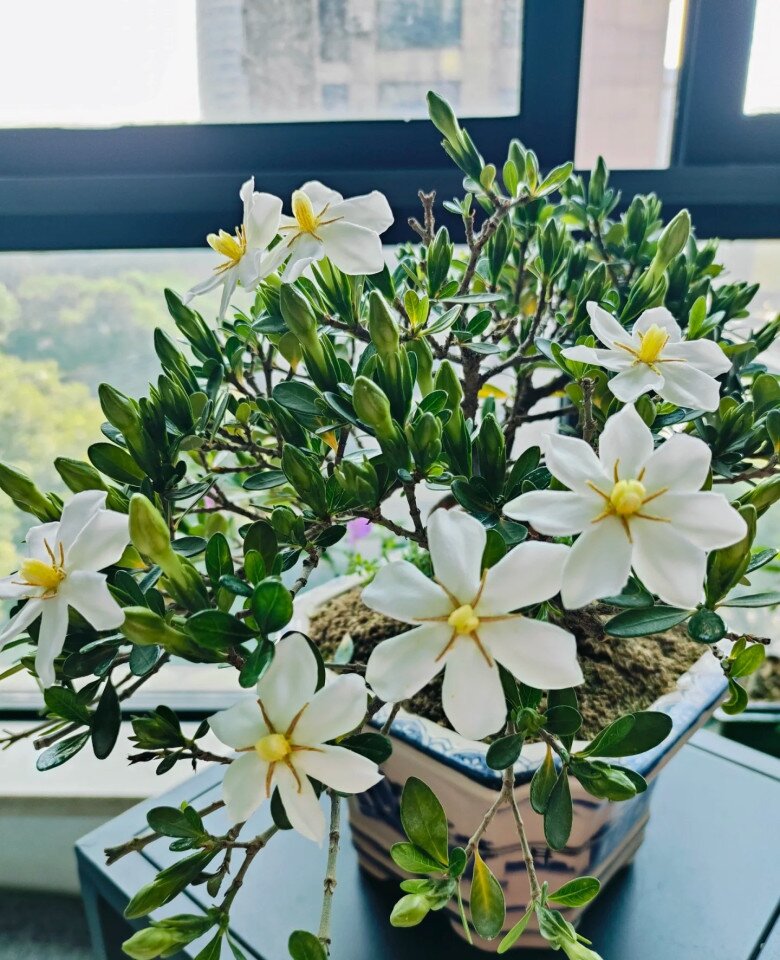
The Kleim’s Hardy gardenia puts on a spectacular floral display, with blooms appearing in large clusters rather than solitary flowers. Even small, well-maintained plants can produce an abundance of flowers simultaneously. Mature specimens may present dozens or even hundreds of blossoms at once, creating a breathtaking spectacle.
As summer arrives and many other flowering plants enter their dormant phase, the Kleim’s Hardy gardenia takes center stage, thriving in the scorching heat. It becomes the undisputed star of the garden during the hottest months, ensuring your balcony or garden remains a vibrant and fragrant oasis.
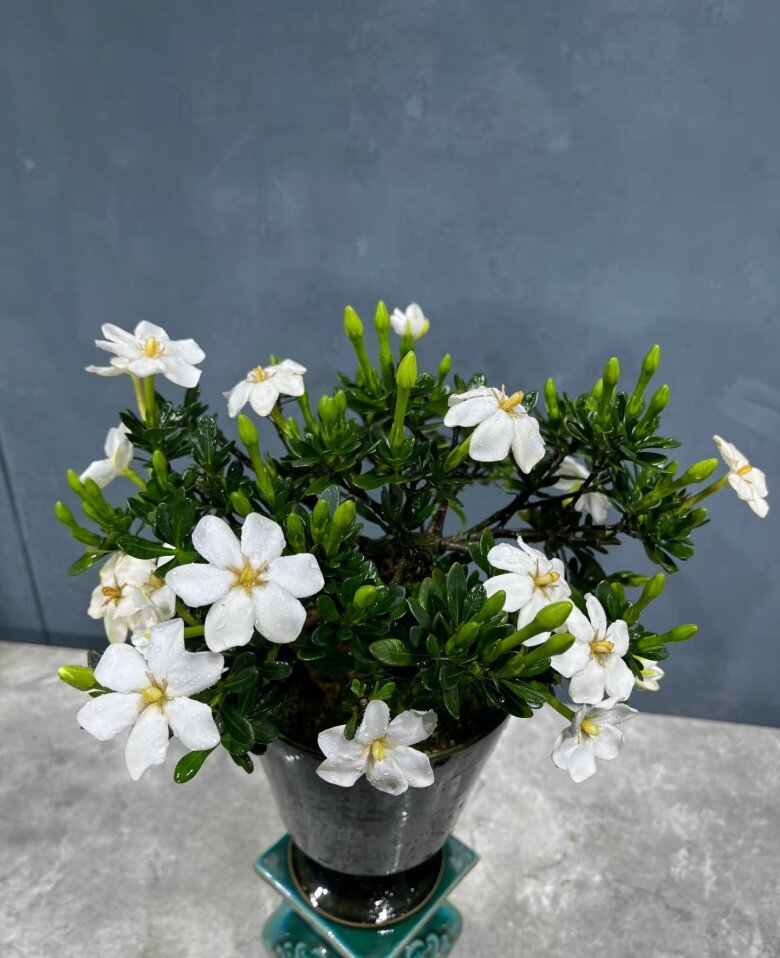
In the realm of feng shui, the pristine white blooms of the Kleim’s Hardy gardenia symbolize purity, peace, and tranquility. Its compact stature, reminiscent of a meditating Zen master, instills a sense of relaxation and serenity within your living space.
The plant’s repeated flowering throughout the year signifies good fortune, prosperity, and sustained growth. Additionally, gardenias represent resilience, as they continue to flourish and display their vibrant colors despite the scorching heat.
The subtle fragrance of its blooms purifies the air and harmonizes energy. Place it in your living room, on your balcony, or even on your work desk to attract positive energy and foster harmony in your home.
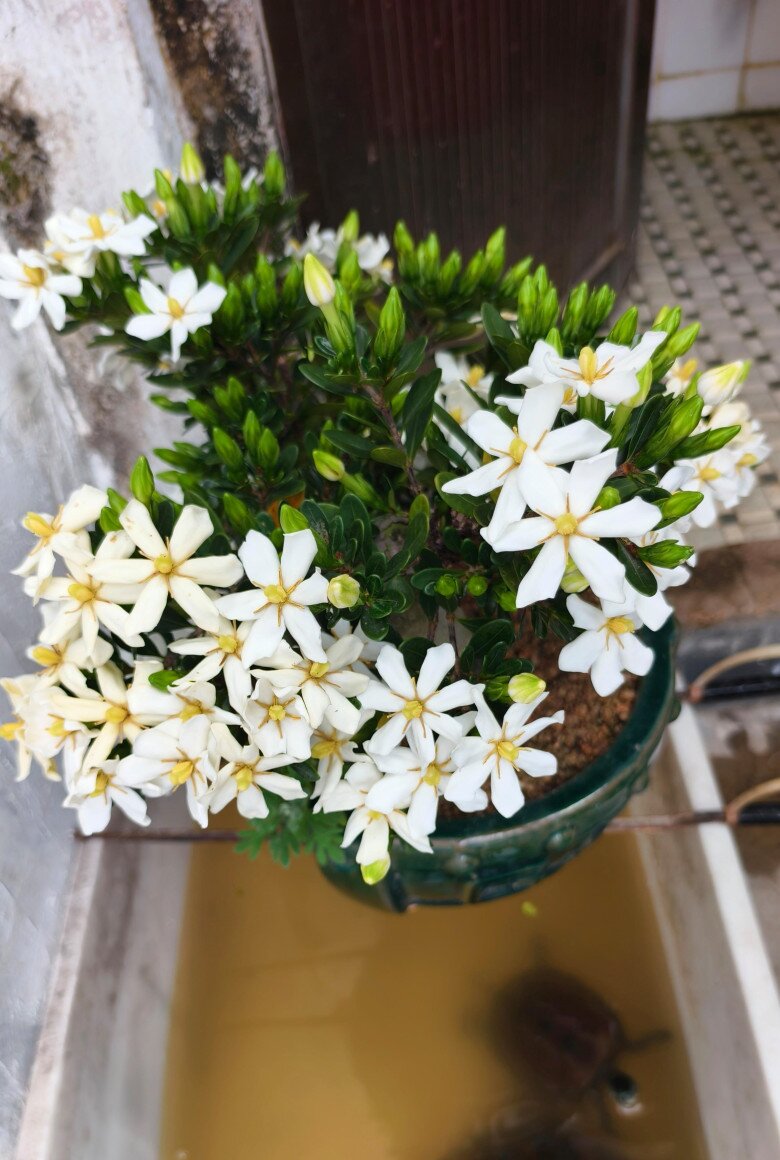
Cultivation and Care Tips for Kleim’s Hardy Gardenia
Propagation of the Kleim’s Hardy gardenia is typically done through stem cuttings. Select a semi-hardwood cutting approximately 10 cm in length, retaining 2-3 leaves. Place the cutting in water until roots develop (around 2 weeks), then transfer it to a pot and provide standard care. This method ensures a high success rate for your new gardenia plant.
Gardenias are renowned for their low-maintenance nature, making them ideal for novice gardeners. They are resilient plants that are relatively pest and disease-free, requiring minimal care.
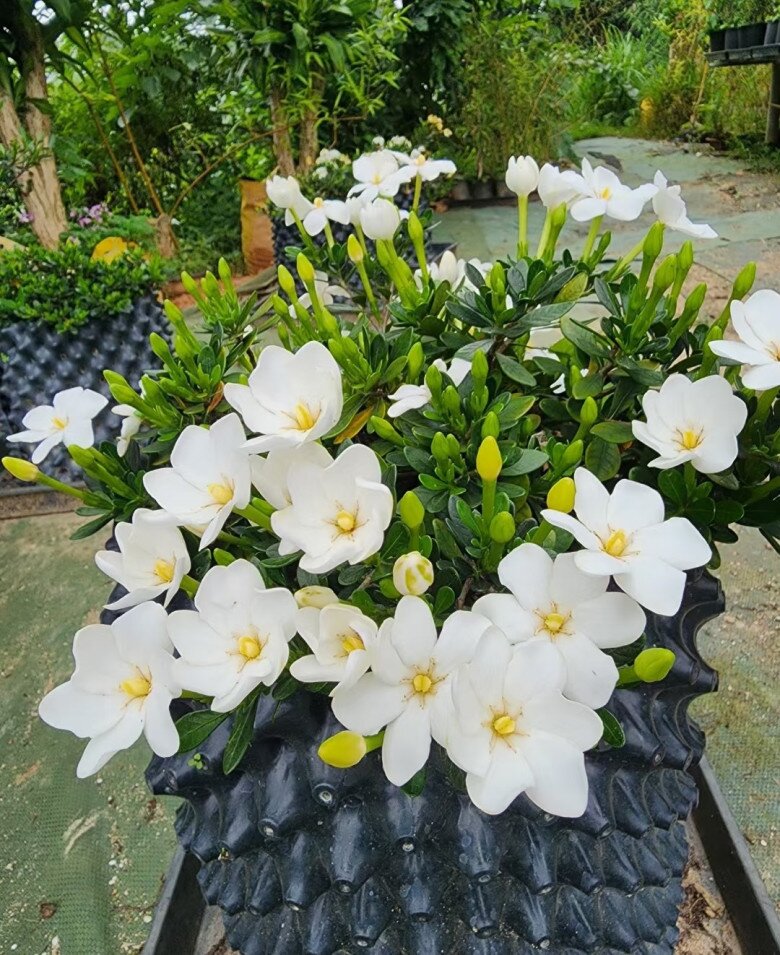
However, to ensure optimal growth and continuous blooming, consider the following cultural practices:
– Soil: Opt for a well-drained, acidic soil with a light, airy texture. Avoid alkaline soils at all costs. If you’re unsure about adjusting soil pH, purchase ready-made gardenia soil from a reputable nursery.
– Light: Gardenias thrive in bright, indirect light. They perform best in well-ventilated areas with diffused sunlight. When grown on balconies, ensure they receive ample sunlight and rotate the pots occasionally to promote even light exposure.
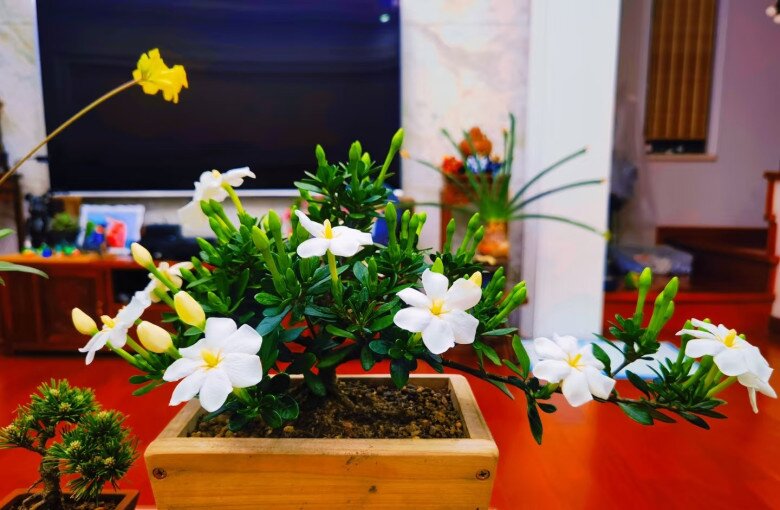
– Watering: Avoid overwatering, as gardenias are susceptible to root rot. Before watering, check the top 3-4 cm of soil—if it’s dry, water sparingly; if it’s still moist, refrain from watering.
Despite their heat tolerance, potted gardenias on balconies require some shade during the hottest months. Ensure they are positioned in a cool, well-ventilated area, and increase watering frequency in summer.
Like most gardenia varieties, Kleim’s Hardy is not frost-hardy. During winter, relocate your plant indoors, keeping it away from direct heat sources like heaters.
Ageless Beauty: A Glimpse of Lin Xinru’s Everlasting Radiance
“A closer look at the photos circulating in the press reveals a discrepancy in Lin Tâm Như’s skin texture. The actress’s complexion appears noticeably less flawless than the image she portrays on her social media feeds. This has sparked a buzz among the public, inviting a deeper exploration into the potential reasons behind this disparity.”

























